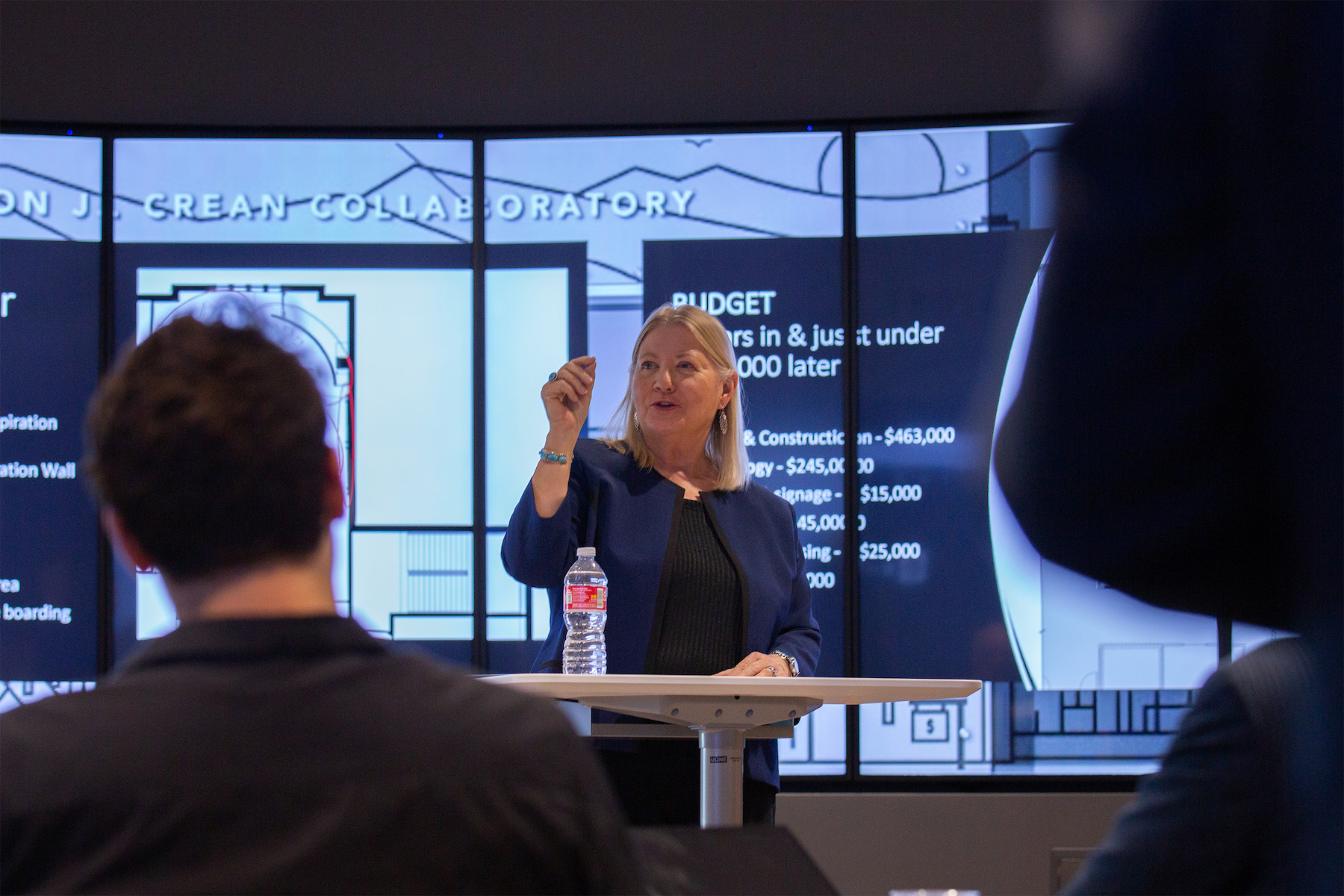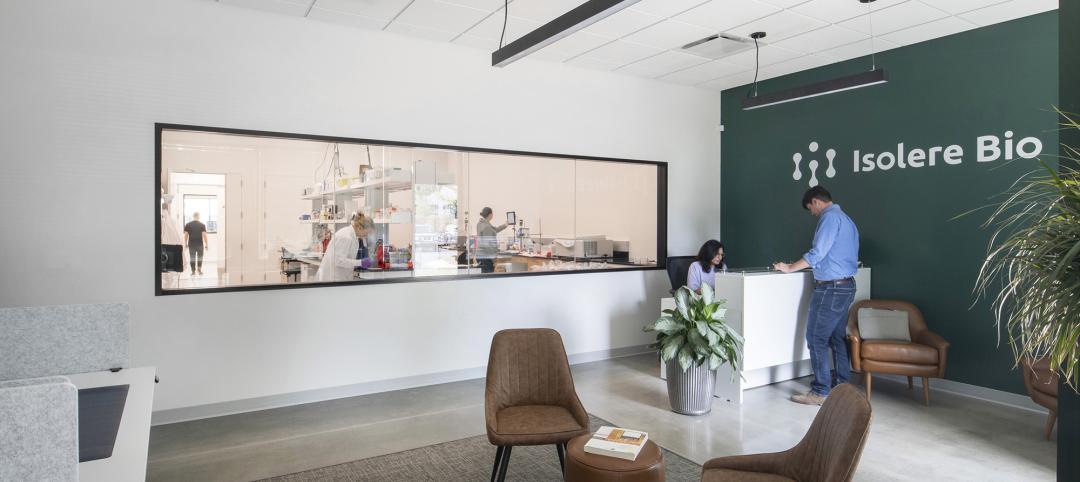Envision a classroom of the 21st century. No, it’s not all metaverse and VR headsets, but it might just be the Collaboratory. The Collaboratory—a mix of collaboration and laboratory—is a networking center being designed at the University of Denver’s College of Business.
While the technological focal point is a large panel screen coined the “Liquid Galaxy,” the focus of the classroom is to emphasize real-world learning opportunities. The overall goal is to encourage collaboration among students, increasing their interactivity with one another and the Collaboratory’s hands-on technology.
Through these tools, the students will receive real-world learning opportunities by engaging with seasoned real estate, property development, and construction professionals. This is especially done through the classroom’s second notable feature: Bluescape, a creative digital collaboration tool.
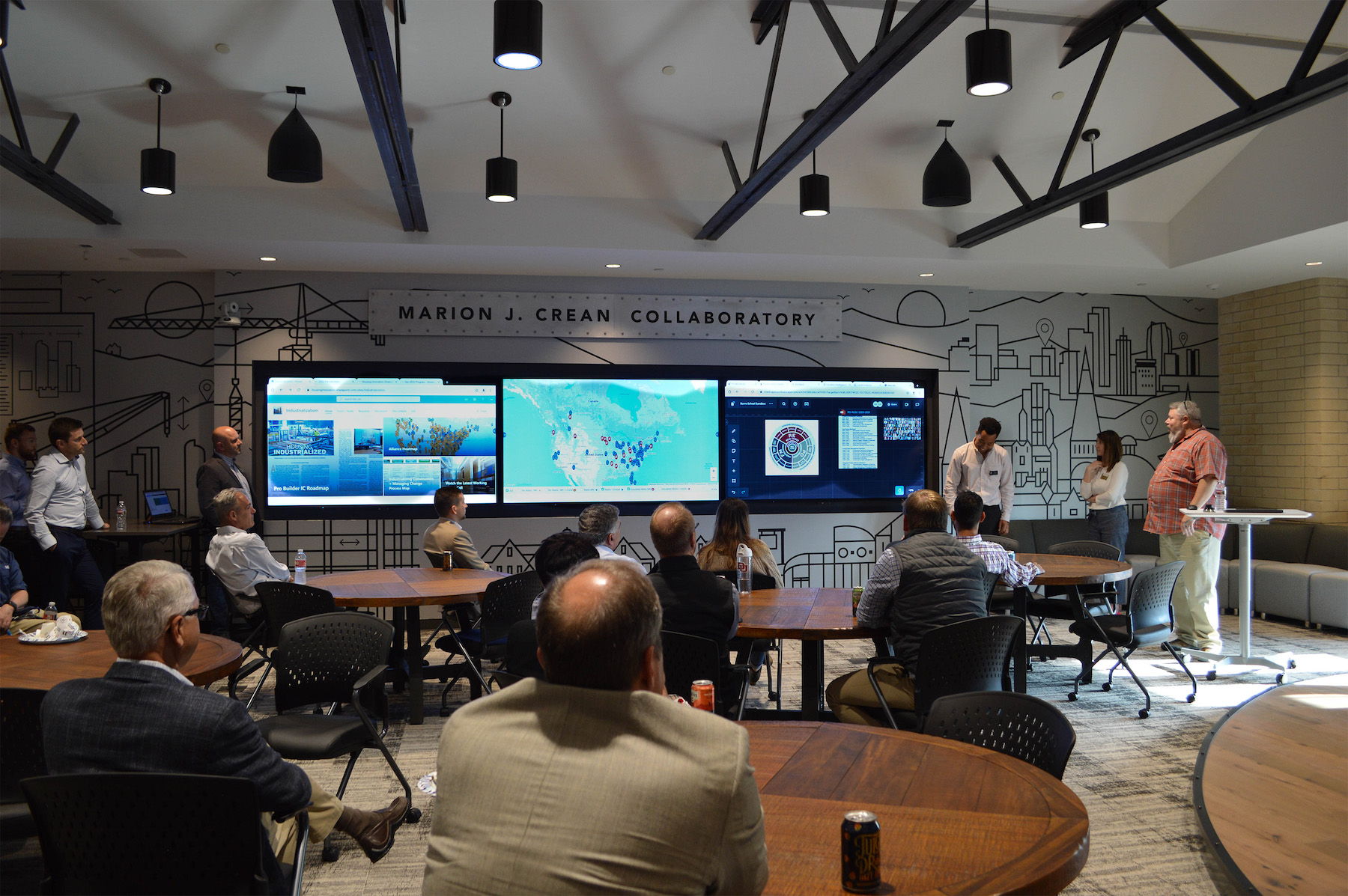
Given the declining workforce development in construction and skilled trades, the Collaboratory aims to help fill the gap. If tech-savvy students are the talent of the future, isn’t it time to create spaces that reflect and enhance their skills?
5 key features of the classroom of the future
The Collaboratory is planned to be a conglomerate of collaborative areas, from conference rooms to stage space. While the space is physically a representation of the business school’s strategy to improve industry connectivity, the real purpose of the Collaboratory is the connections. Here are some of the notable key features of the classroom, and what it might offer to the future of learning.
1. Advisor network conference room
The Marion J. Crean Collaboratory will be equipped with technology that allows students to virtually connect to a network of “advisors” located anywhere in the world (via online collaboration tools like Microsoft Teams and Zoom).
According to Eric Holt, assistant professor at the university, the college has an informal network of alumni and industry professionals that already act in the role of network advisors. He hopes the Collaboratory will help formalize those networks and offer many opportunities to the industry.
This direct access to industry leaders will help students grow and ideally learn from mistakes of the decades of experience that surrounds them.
“It has been an exciting way to connect academia and industry in ways I have never experienced before in my 24-year career,” says Holt.
2. Liquid Galaxy
This feature will allow students and alumni to explore the planet via Google Earth, engaging through a wraparound chamber of multiple LCD screens. This digital workspace brings places to life with immersive panoramic images, video, and tours.
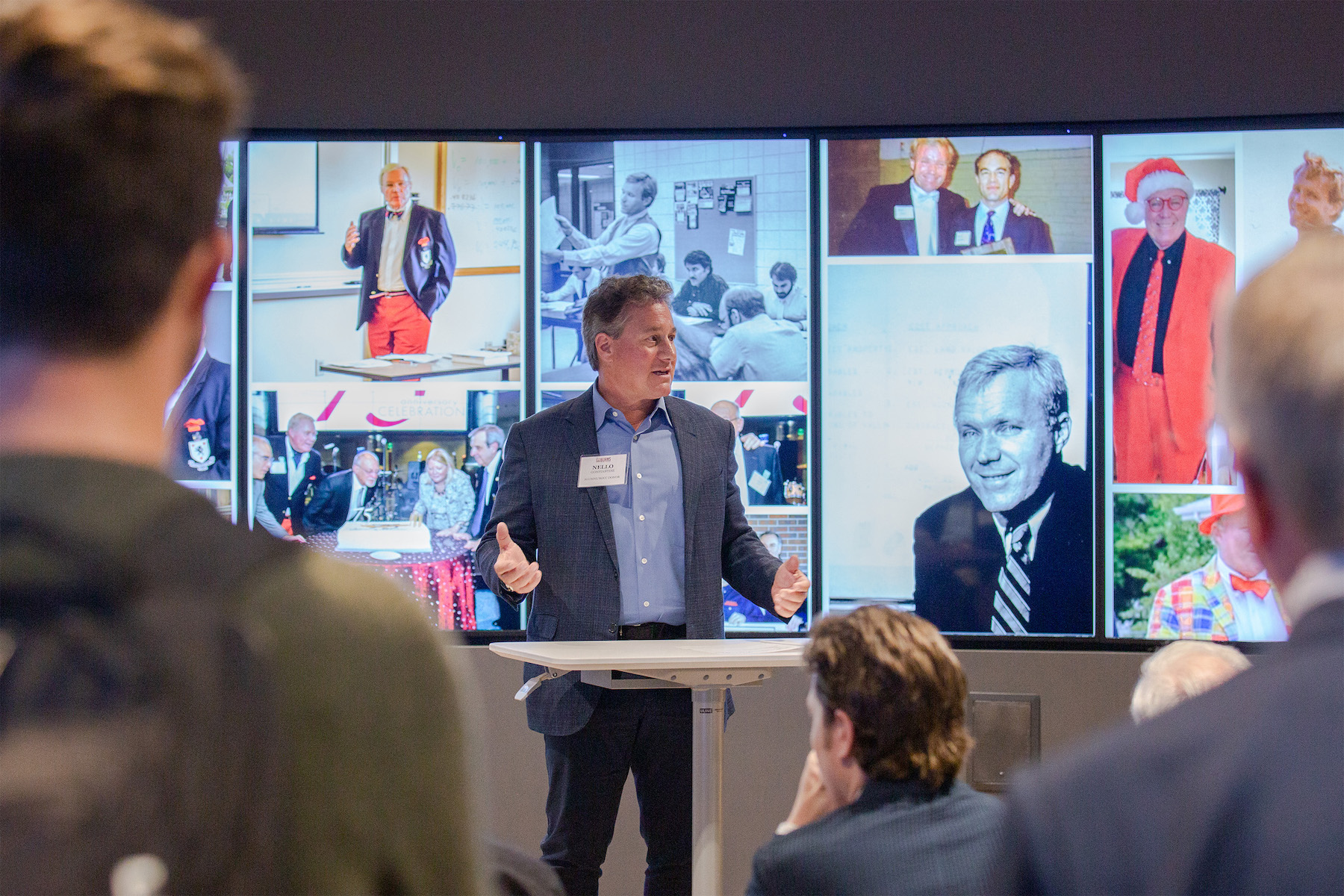
Many believe that the Liquid Galaxy will make waves in attracting talent to the industry—and enable students to become master communicators as well. Marrying prospective young builders with industry tech, the Collaboratory aims to nurture advanced thinking from students early on in their careers.
3. Bluescape interactive virtual workspace wall
Designed as the area where the majority of classroom engagement will take place, the workspace wall is another collection of screens built for collaboration.
According to the Daniels College of Business website, it’s designed to accelerate decision making by enabling anyone to create, communicate, visualize, organize, and strategize virtually anything, anywhere, any time.
4. Barbara Jackson inspiration stage
The self described Ted-Talk-esque stage sits in front of the Liquid Galaxy, allowing industry leaders and guest speakers to have compelling presentations. The goal is to have an engaging platform that brings students and presenters together to discuss a variety of relevant industry topics.
The stage is named after Barbara Jackson, director of the Franklin L. Burns School of Real Estate and Construction Management at the University of Denver. The Collaboratory has been a vision of Jackson’s for years, according to Holt, and eight of those have been spent making the vision a reality.
5. Saipe communication workstation and huddle spaces
The Collaboratory will also have individual and group-oriented workstations, allowing for flexibility of independent work without having to leave the space. Comfortable furnishings are selected to create an inviting environment, encouraging group-work and communication.
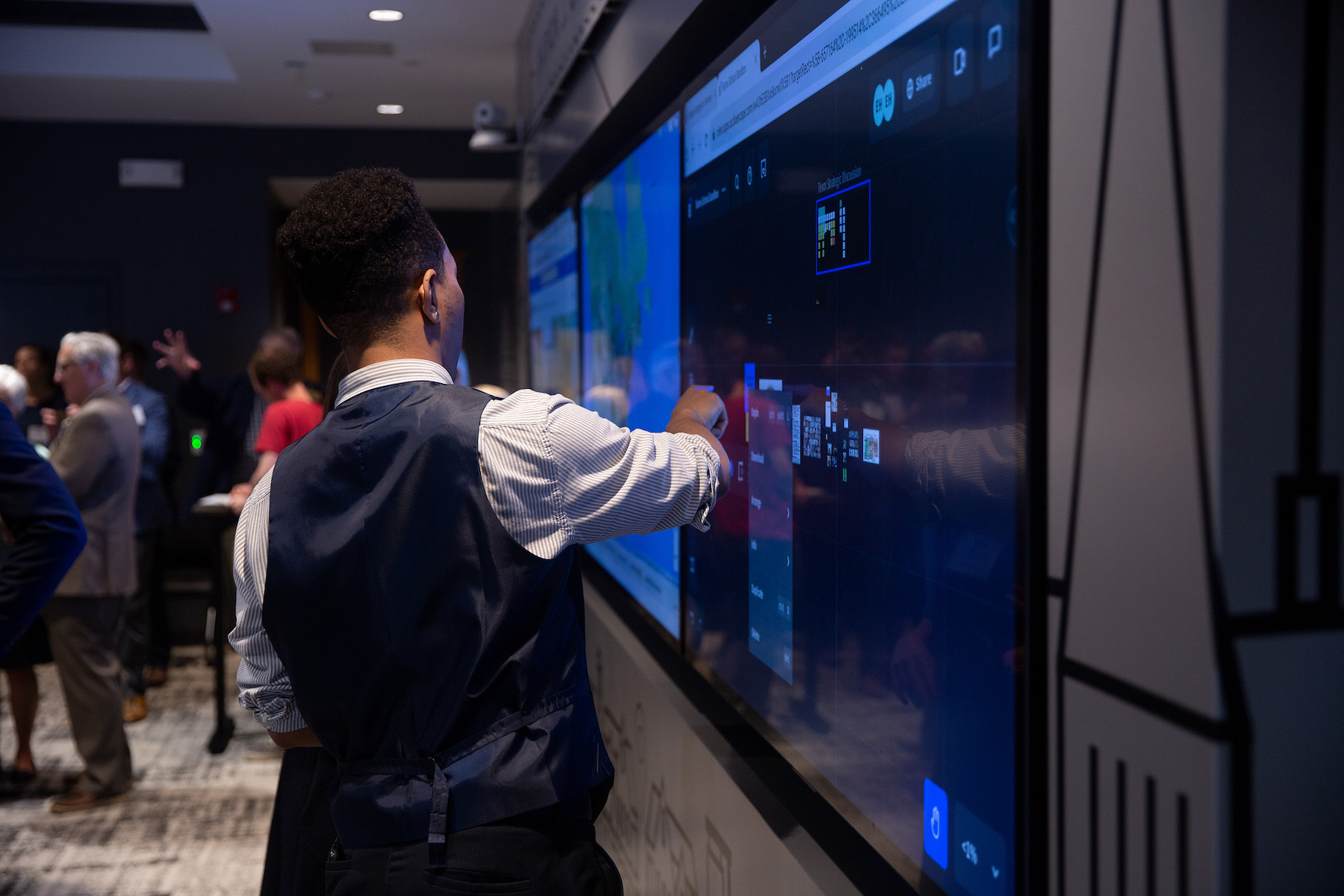
Workforce development and hands-on learning
Workforce development is a big industry problem as of late, and many companies are struggling to hire skilled workers. How can the Collaboratory help train for the trades?
Well, according to Dennis Steigerwalt, president of Housing Innovation Alliance, the Collaboratory will forge stronger bonds between the fresh perspectives of students and the real-world challenges faced by industry.
“We aim to nurture a culture of innovation within our industry, and to establish a framework for open collaboration with value chain partners to drive new solutions for greater impact and a more resilient business,” says Steigerwalt.
The Collaboratory held its facility dedication and official opening ceremony earlier this month. It was a four-day event which started with three homebuilding industry specific VIP events.
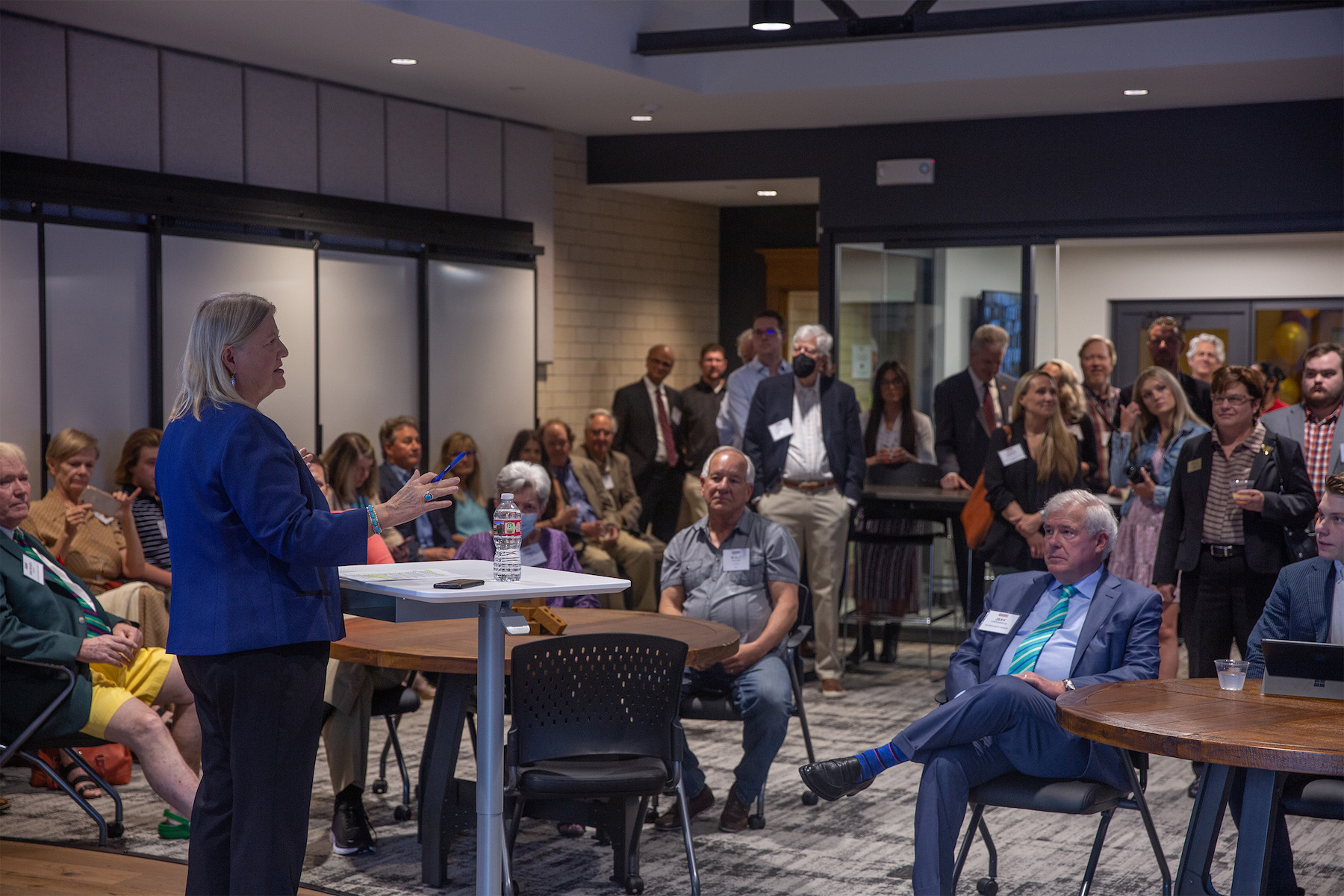
According to Steigerwalt, the VIP events were an opportunity to introduce the platform as a national industry-student engagement vehicle and highlight the enabling technologies within the physical space, such as Bluescape and the Liquid Galaxy.
Representatives from Lennar, MiTek, Mitsubishi, Johns Manville and more attended the event. This included Gene Myers, owner and CEO of Thrive Home Builders, who found the Collaboratory to be a very compelling example of a cutting-edge teaching facility.
“The enthusiasm from students was very strong,” he said, adding that the Collaboratory will certainly aid in student recruitment to the university.
Another attendee of the event was Rodney Hall, partner at Hall-Williams Executive Search—an executive search and recruitment advisory service for real estate development, construction, and property technology.
“For me, the technology side of the physical and virtual space was cool—who doesn’t like big touch screens tethered to Google Earth?” said Hall. “However, the ability to merge, present, and compare content from multiple sources was the trigger point for me. Merging industry data for the benefit of students and corporate participants becomes the bridge between education and practical application—and extends beyond the university level.”
Hall thinks that the Collaboratory model could become the ‘go-to’ for a wide variety of industry studies and reports, ranging from land use to carbon neutral/net zero homes.
Related Stories
Laboratories | Apr 22, 2024
Why lab designers should aim to ‘speak the language’ of scientists
Learning more about the scientific work being done in the lab gives designers of those spaces an edge, according to Adrian Walters, AIA, LEED AP BD+C, Principal and Director of SMMA's Science & Technology team.
Laboratories | Apr 15, 2024
HGA unveils plans to transform an abandoned rock quarry into a new research and innovation campus
In the coastal town of Manchester-by-the-Sea, Mass., an abandoned rock quarry will be transformed into a new research and innovation campus designed by HGA. The campus will reuse and upcycle the granite left onsite. The project for Cell Signaling Technology (CST), a life sciences technology company, will turn an environmentally depleted site into a net-zero laboratory campus, with building electrification and onsite renewables.
Laboratories | Apr 12, 2024
Life science construction completions will peak this year, then drop off substantially
There will be a record amount of construction completions in the U.S. life science market in 2024, followed by a dramatic drop in 2025, according to CBRE. In 2024, 21.3 million sf of life science space will be completed in the 13 largest U.S. markets. That’s up from 13.9 million sf last year and 5.6 million sf in 2022.
Sustainability | Mar 21, 2024
World’s first TRUE-certified building project completed in California
GENESIS Marina, an expansive laboratory and office campus in Brisbane, Calif., is the world’s first Total Resource Use and Efficiency (TRUE)-certified construction endeavor. The certification recognizes projects that achieve outstanding levels of resource efficiency through waste reduction, reuse, and recycling practices.
Adaptive Reuse | Mar 7, 2024
3 key considerations when converting a warehouse to a laboratory
Does your warehouse facility fit the profile for a successful laboratory conversion that can demand higher rents and lower vacancy rates? Here are three important considerations to factor before proceeding.
University Buildings | Feb 21, 2024
University design to help meet the demand for health professionals
Virginia Commonwealth University is a Page client, and the Dean of the College of Health Professions took time to talk about a pressing healthcare industry need that schools—and architects—can help address.
Urban Planning | Feb 5, 2024
Lessons learned from 70 years of building cities
As Sasaki looks back on 70 years of practice, we’re also looking to the future of cities. While we can’t predict what will be, we do know the needs of cities are as diverse as their scale, climate, economy, governance, and culture.
Laboratories | Feb 5, 2024
DOE selects design-build team for laboratory focused on clean energy innovation
JE Dunn Construction and SmithGroup will construct the 127,000-sf Energy Materials and Processing at Scale (EMAPS) clean energy laboratory in Colorado to create a direct path from lab-scale innovations to pilot-scale production.
Laboratories | Jan 25, 2024
Tactical issues for renovating university research buildings
Matthew Plecity, AIA, ASLA, Principal, GBBN, highlights the connection between the built environment and laboratory research, and weighs the benefits of renovation vs. new construction.
Laboratories | Jan 22, 2024
Speculative vs purpose-built labs: Pros and cons
Hanbury's George L. Kemper, AIA and R. David Cole, AIA share the unique advantages and challenges of both spec. and purpose-build labs.


